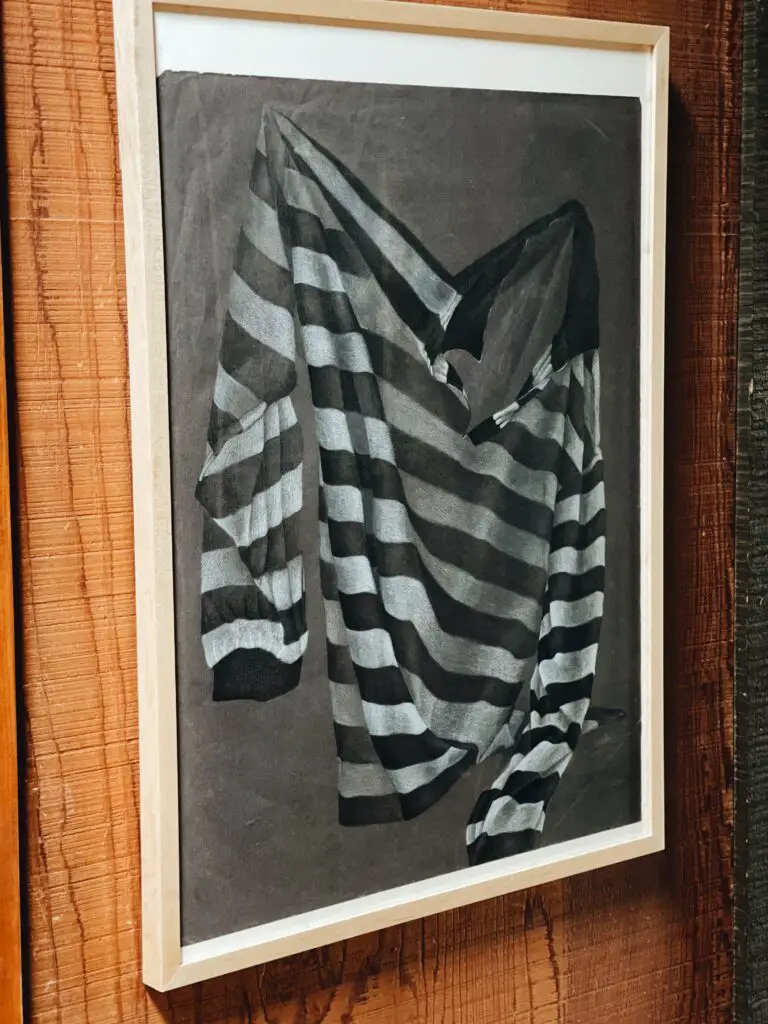Even professionals can be intimidated by art! Million-dollar price tags, high-profile forgeries, and the eternal question, “What is art?” Sometimes it seems safer to stop by a HomeGoods for something blandly reliable rather than hunting around a local flea market for a special piece.
I consider it a responsibility as an art student, art lover, and vintage collector to guide you out of your comfort zone when it comes to wall decor so you can bring home unique pieces you’ll love. It is unlikely that any of the pieces in my collection will earn me a spot on Antiques Roadshow, but I have found a few gems at great prices.
I’ll give you my top tip right now: Buy what you love. The piece you love can come from Christie’s or the bargain bin at your local thrift store. Display it with pride!
Here are the rest of my favorite tips for buying original vintage art with confidence.

Contents
What you should know before you go
1. Assess your space
Consider how much wall space you have available and whether you would like one larger statement piece, two or three coordinated works, or a gallery wall display. Keep these dimensions handy while you shop for art and frames. Take note of how the lighting affects the space as well. Acrylics are virtually impervious to sunlight, whereas watercolors fade under harsh sunlight and need UV protective glass. The lighting will also influence the colors in the work. Details in a dark painting will disappear in a dark room, and yellow incandescent lighting will change the entire color palette.
2. Take the subject into account
Consider the subject matter of artwork you’re already attracted to. Do you like landscapes or floral still lifes? Vintage portraits are also trendy right now. Your walls are the perfect place to express your personality. When you’ve already painted the walls white and purchased a neutral sofa, artwork is where you can explore the room’s themes and color palette.

The hunt is on
3. Know where to look
It is easy to find unique art if you know where to look. Some of my favorites include Etsy, eBay, ShopGoodwill.com, Auctions, flea markets, antique shops, estate sales, and thrift shops. While I have found a few worthwhile pieces at thrift shops, most thrift store artwork is likely to be ugly, damaged, or an abandoned souvenir from a paint and sip party. It’s fun when I find a great exception, and maybe you will too!

4. Identifying value
Art value doesn’t play by rigid rules. There are so many ‘ifs’ that can change a piece’s price point. Among them are:
The artist. The chances of discovering a lost Renoir or Picasso are slim, but maybe that painting you’re considering is signed by a listed artist! Look for signatures to see if you can match the artist’s name with auction records. Depending on the artist, you may be able to compare the price of the piece you’re holding with past records and get an idea of its value.
Condition. Red flags such as tears, scratches, gouges, stains, discoloration, and flaking paint should affect the selling price. Are you comfortable displaying the piece in its current condition, or do you need to invest in restoration?
Medium. Generally, oil paintings are the most valuable, followed by acrylic, watercolor, and gouache. Lithographs and etchings have their own value system. Graphite, charcoal, and ink sketches are usually the most affordable.
Expertise. Generally speaking, the work of a studied professional is more valuable than the work of an obvious amateur.
Size. Size does matter here. There is a good chance that a larger painting of the same subject will be more valuable than a smaller one.
Aesthetics. Good art is subjective, so this one is a bit tricky. And trends are constantly changing. The best way to choose art for yourself is to feel it out. Is this piece beautiful to you? What makes it so? There’s a lot of art history and theory behind those answers, but you should buy what you like.
The Seller’s Mood. No joke! An item’s selling price is heavily influenced by the seller’s own opinion and attitude. It could be his nostalgic attachment to it, her desire to clear inventory, lousy weather, or Mercury in retrograde that determines the asking price. While negotiation doesn’t always work, it often helps to ask nicely if prices are set.



Making P. T. Barnum proud!